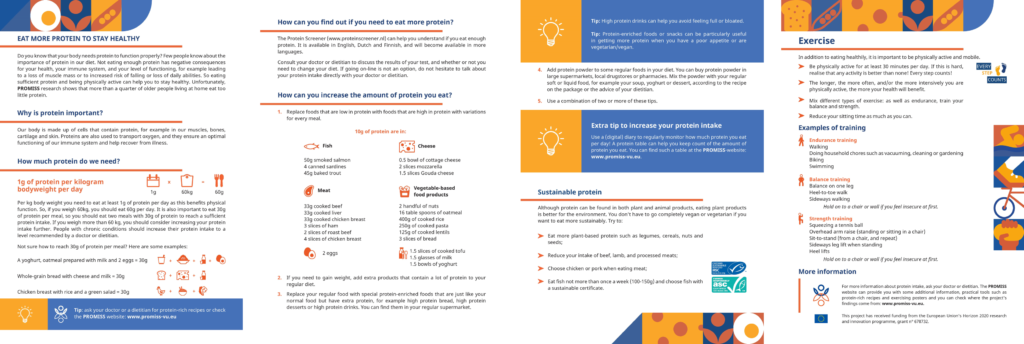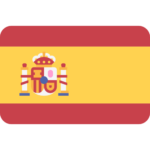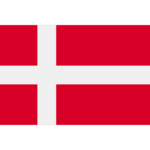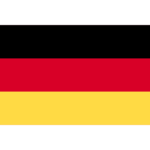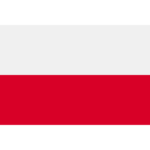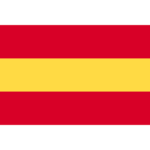Older persons
Download the brochure for older people as .pdf (click here)
You can also download the brochure in the following languages:
- Czech
- Danish
- Dutch
- Finnish
- French (France)
- German
- Greek
- Hungarian
- Italian
- Polish
- Romanian
- Spanish
- French (Quebec)
If you would like to have more detailed information on which food contains how much protein, have a look at our protein table (available in the same languages as the brochure) – click here.
Eat more protein to stay healthy
Do you know that your body needs protein to function properly? Few people know about the importance of protein in our diet. Not eating enough protein has negative consequences for your health, your immune system, and your level of functioning, for example leading to a loss of muscle mass or to increased risk of falling or loss of daily abilities. So eating sufficient protein and being physically active can help you to stay healthy.
Unfortunately, PROMISS research shows that more than a quarter of older people living at home eat too little protein.
Why is protein important?
Our body is made up of cells that contain protein, for example in our muscles, bones, cartilage and skin. Proteins are also used to transport oxygen, and they ensure an optimal functioning of our immune system and help recover from illness.
How much protein do we need?

Per kg body weight you need to eat at least 1g of protein per day as this benefits physical function. So, if you weigh 60kg, you should eat 60g per day. It is also important to eat 30g of protein per meal, so you should eat two meals with 30g of protein to reach a sufficient protein intake. If you weigh more than 60 kg, you should consider increasing your protein intake further. People with chronic conditions should increase their protein intake to a level recommended by a doctor or dietitian.
Not sure how to reach 30g of protein per meal? Here are some examples:
- A yoghurt, oatmeal prepared with milk and 2 eggs = 30g
- Whole-grain bread with cheese and milk = 30g
- Chicken breast with rice and a green salad = 30g
Tip: ask your doctor or a dietitian for protein-rich recipes or check the PROMISS website.
How can you find out if you need to eat more protein?
The Protein Screener (www.proteinscreener.nl) can help you understand if you eat enough protein. It is available in English, Dutch and Finnish, and will become available in more languages.
Consult your doctor or dietitian to discuss the results of your test, and whether or not you need to change your diet. If going on-line is not an option, do not hesitate to talk about your protein intake directly with your doctor or dietitian.
How can you increase the amount of protein you eat?
1. Replace foods that are low in protein with foods that are high in protein with variations for every meal.
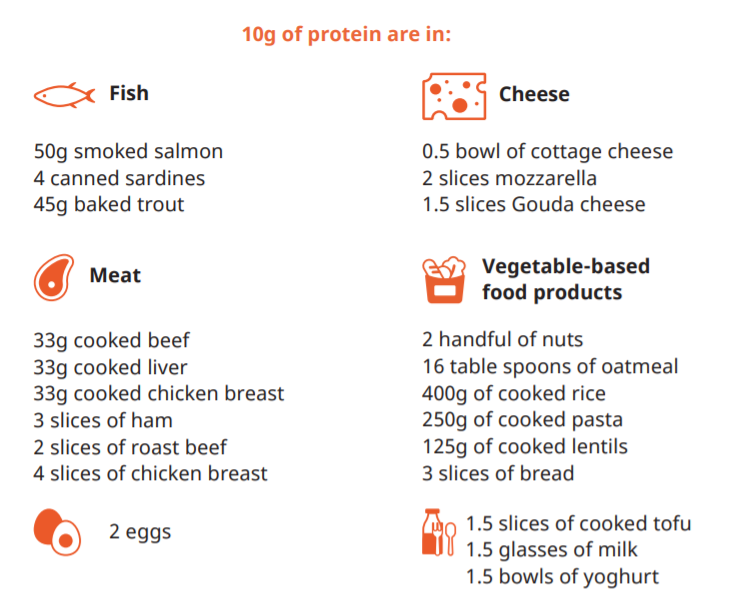
2. If you need to gain weight, add extra products that contain a lot of protein to your regular diet.
3. Replace your regular food with special protein-enriched foods that are just like your normal food but have extra protein, for example high protein bread, high protein desserts or high protein drinks. You can find them in your regular supermarket.
Tip: High protein drinks can help you avoid feeling full or bloated.
Tip: Protein-enriched foods or snacks can be particularly useful in getting more protein when you have a poor appetite or are vegetarian/vegan.
4. Add protein powder to some regular foods in your diet. You can buy protein powder in large supermarkets, local drugstores or pharmacies. Mix the powder with your regular soft or liquid food, for example your soup, yoghurt or dessert, according to the recipe on the package or the advice of your dietitian.
5. Use a combination of two or more of these tips.
Extra tip to increase your protein intake
Use a (digital) diary to regularly monitor how much protein you eat per day! A protein table can help you keep count of the amount of protein you eat. You can find such a protein table in multiple languages here.
Sustainable protein
Although protein can be found in both plant and animal products, eating plant products is better for the environment. You don’t have to go completely vegan or vegetarian if you want to eat more sustainably. Try to:
- eat more plant-based protein such as legumes, cereals, nuts and seeds;
- reduce your intake of beef, lamb, and processed meats;
- choose chicken or pork when eating meat;
- eat fish not more than once a week (100-150g) and choose fish with a sustainable certificate.
Exercise
In addition to eating healthily, it is important to be physically active and mobile.
- Be physically active for at least 30 minutes per day. If this is hard, realise that any activity is better than none! Every step counts!
- The longer, the more often, and/or the more intensively you are physically active, the more your health will benefit.
- Mix different types of exercise: as well as endurance, train your balance and strength.
- Reduce your sitting time as much as you can.
Examples of training
Endurance training
- walking
- doing household chores such as vacuuming, cleaning or gardening
- biking
- swimming
Balance training
- balance on one leg
- heel-to-toe walk
- sideways walking
Hold on to a chair or wall if you feel insecure at first.
Strength training
- squeezing a tennis ball
- overhead arm raise (standing or sitting in a chair)
- sit-to-stand (from a chair, and repeat)
- sideways leg lift when standing
- heel lifts
Hold on to a chair or wall if you feel insecure at first.
Protein Table
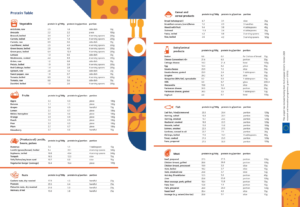
- English
- Czech
- Danish
- Dutch
- Finnish
- French (France)
- Greek
- German
- Hungarian
- Italian
- Polish
- Spanish
- Romanian
- French (Quebec)
